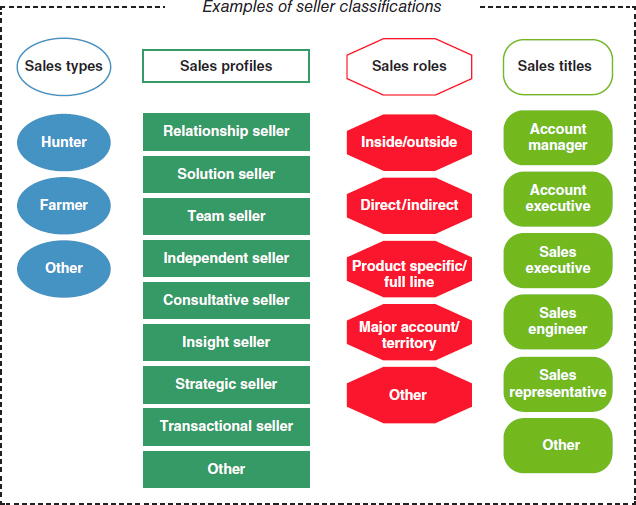3 What the New Buyers Expect: Situational Fluency
Psychologists define a persona as a social role or a character played by an actor. The word is derived from Latin, where it originally referred to a theatrical mask.1 In The Collaborative Sale we are introducing you to three new sales personae, which are character parts that sellers must play within the buyer's process in order to be successful with Buyer 2.0.
So what does this mean, exactly? It means that no matter what job title, function, or role a seller may take on, the seller must assume the mask or the persona that selling to Buyer 2.0 requires.
We want to be perfectly clear about what we are saying. To help us do this, let's first take a look at how sellers are often categorized. For example, sellers can be classified by different types, profiles, roles, or titles. Figure 3.1 displays only a few of the dozens of different classifications of sellers that we've seen our clients use.

Figure 3.1 Examples of Seller Classifications
Another example of seller classification is used by the Chally Group, which provides a hierarchical model of sales roles organized into 12 different selling job functions, classified by hunter/farmer, inside/outside, direct/indirect, specialized product/full line, and major account/territory. (See Figure 3.2.)2
A persona is not a sales title, type, profile, or job role. A persona is a character role ...
Get The Collaborative Sale: Solution Selling in a Buyer Driven World now with the O’Reilly learning platform.
O’Reilly members experience books, live events, courses curated by job role, and more from O’Reilly and nearly 200 top publishers.

